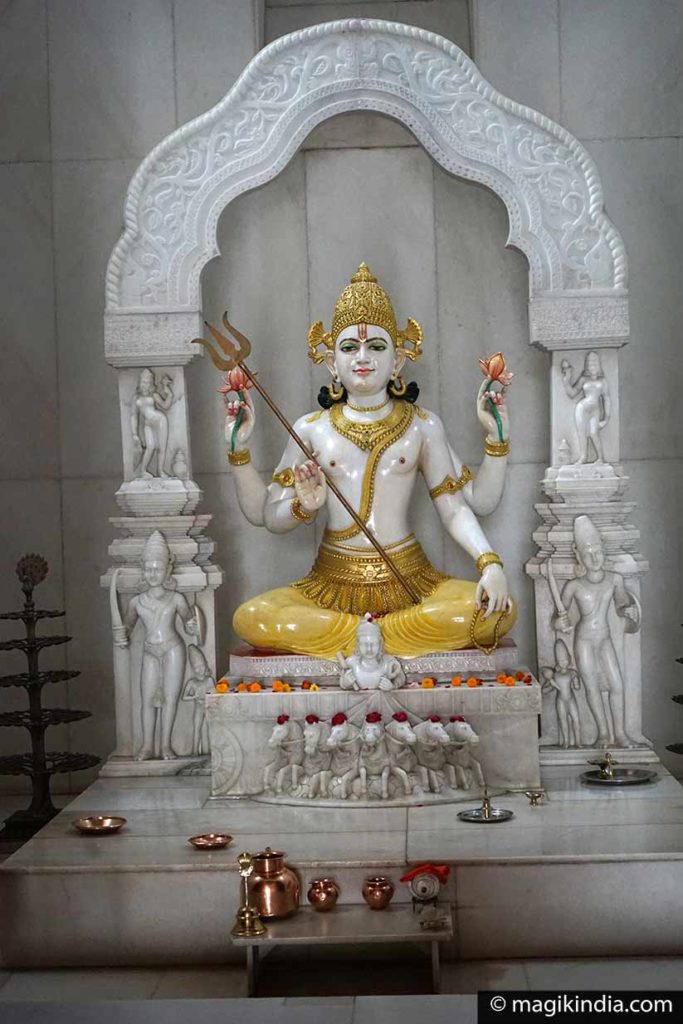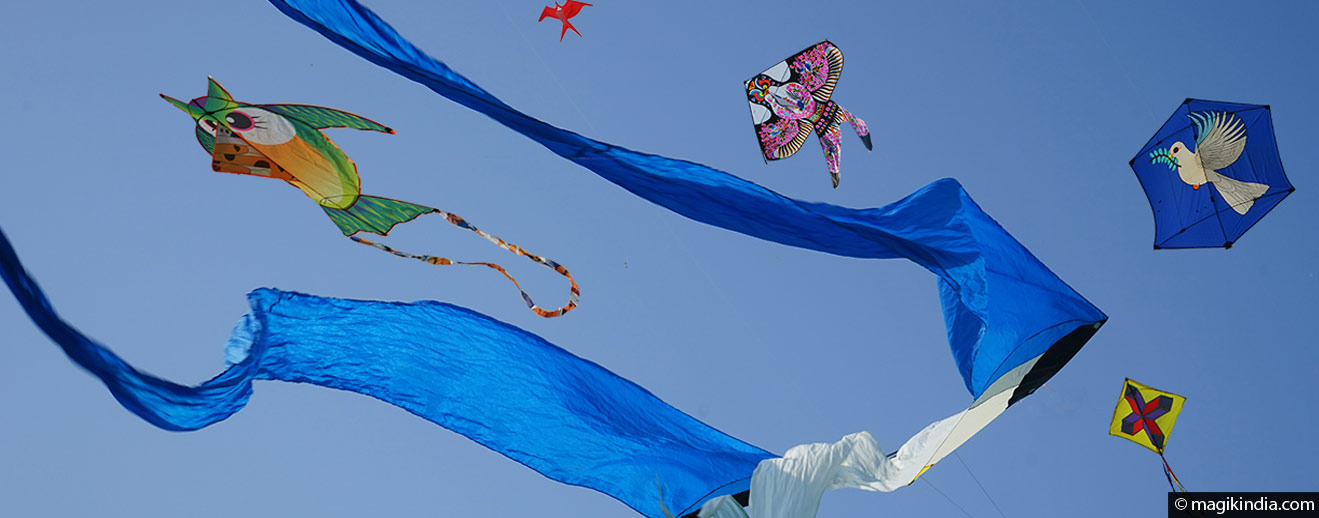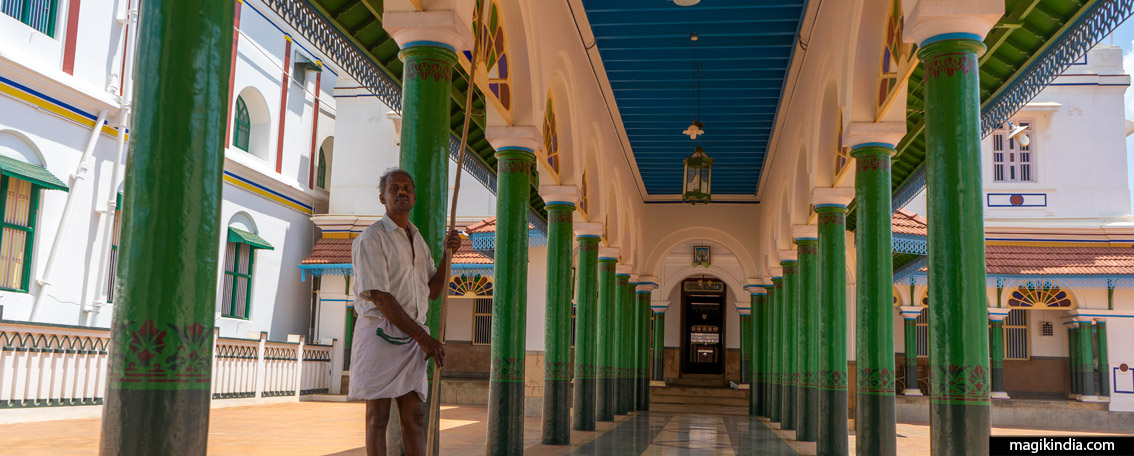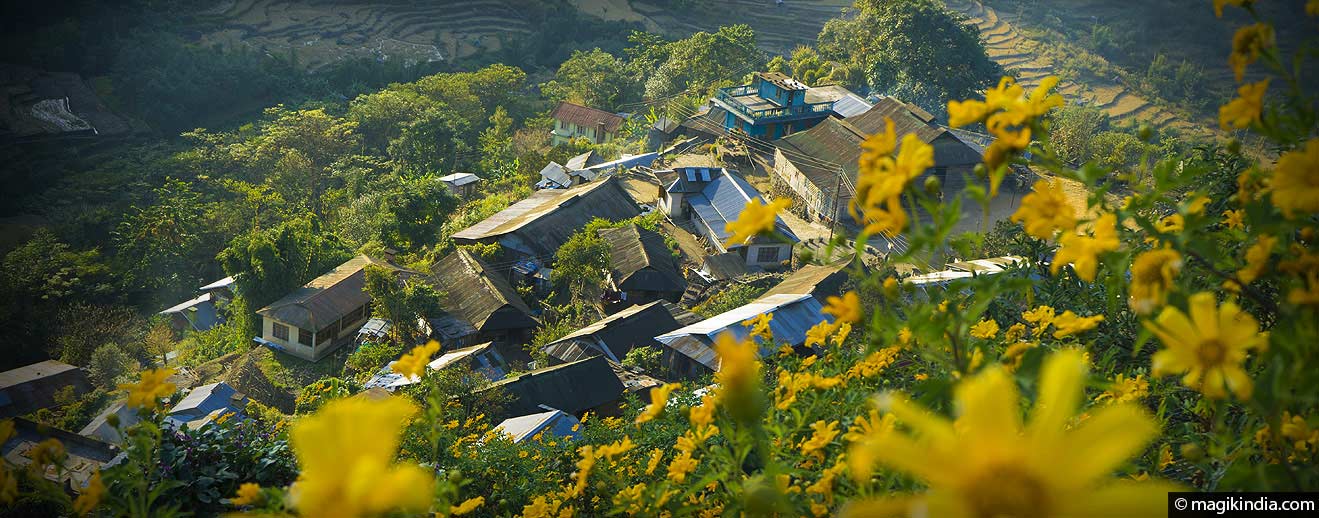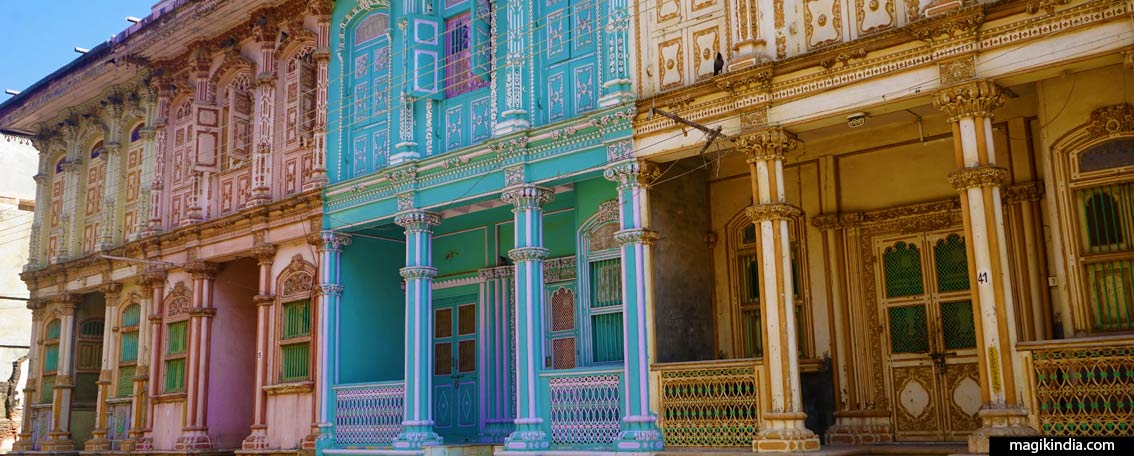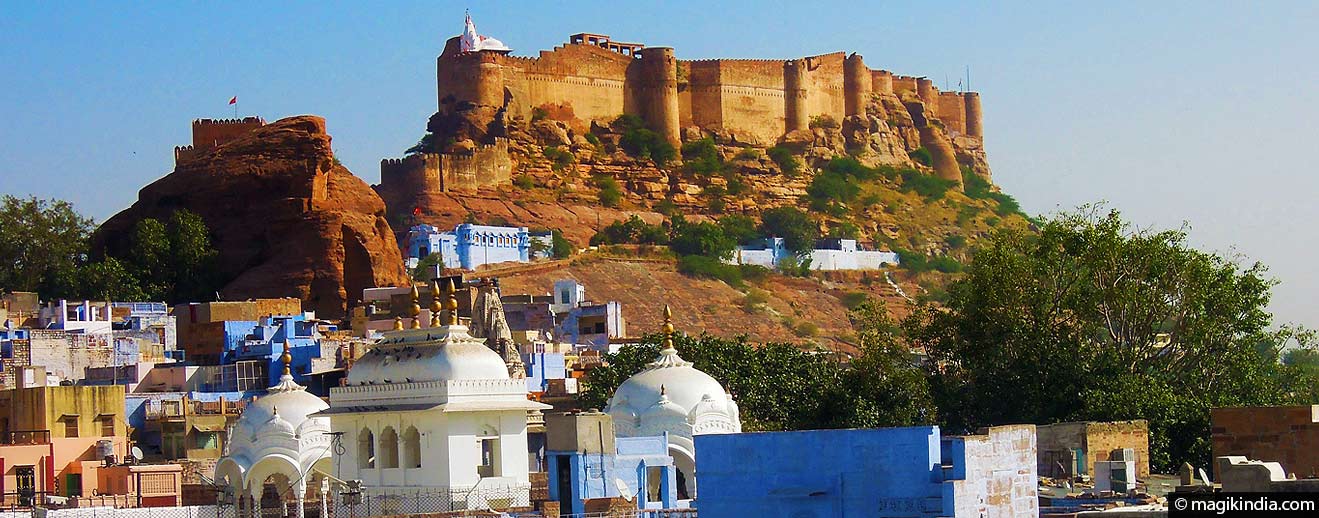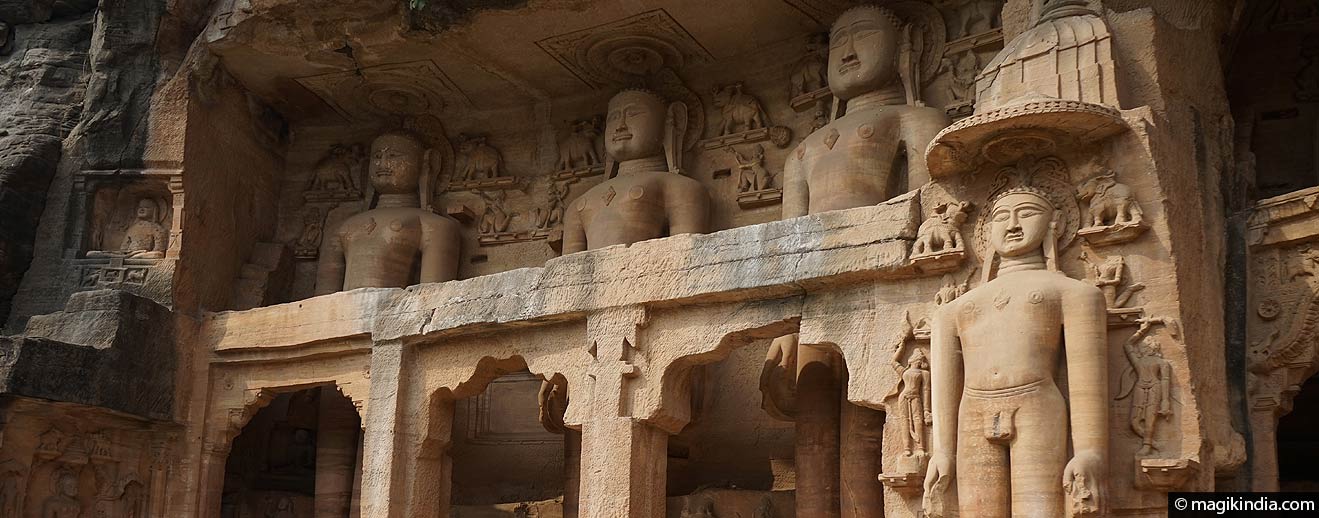
Gwalior, once the pearl of the Mughal Empire
Gwalior, the fourth largest town in the State of Madhya Pradesh, owes its fame to the fort, perched atop a 300ft hill, which the Mughal emperor Babur called “the pearl amongst the fortresses of Hind”. Gwalior is also known as a cultural centre and home of both the famous poet and musician Tansen and a renowned gharana or school of classical Hindustani music.
There is a legend about the origin of Gwalior’s name. It is said that Suraj Sen, a 13th-century prince of the Rajput Sikarwar clan, was cured of leprosy by the sage Gwalipa. To thank the sage, the prince named a new town after him.
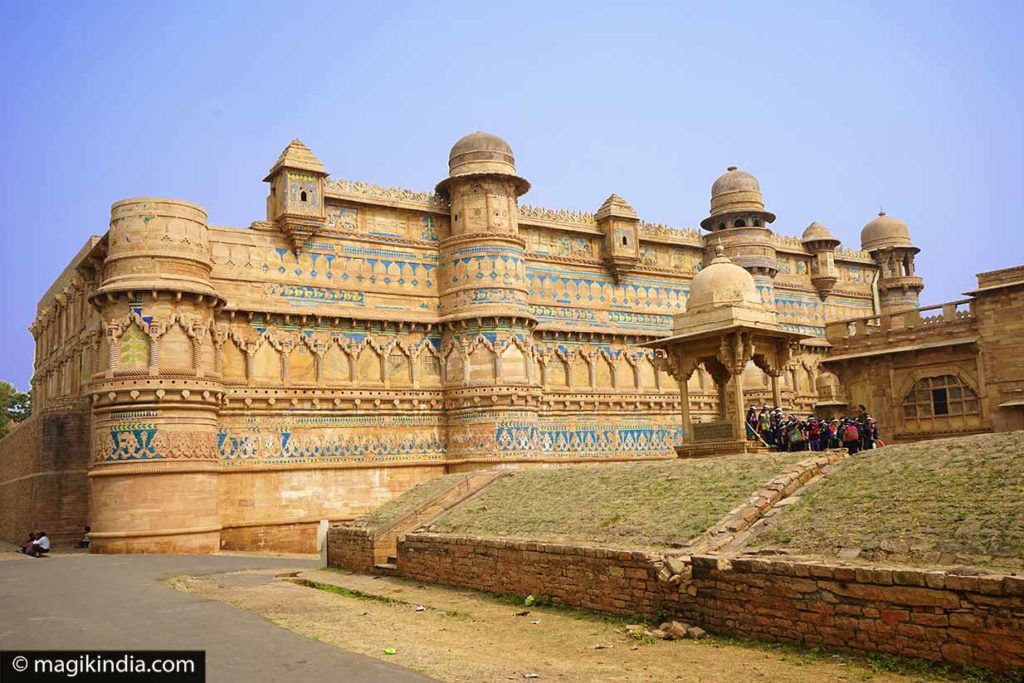
Over the centuries, Gwalior was the capital of several dynasties. In 1231 a Muslim army invaded Gwalior and the city remained under Muslim domination until the next century. In 1375, it fell to Raja Veer Singh and the Tomar dynasty. This was Gwalior’s golden age. In 1516 the city was conquered again, this time by the Delhi Sultanate under the Lodi dynasty.
The Mughals retook the city in Babur’s reign and held it until the 1730s, when Ranoji Scindia’s Marathas seized it. Gwalior remained a princely state during British rule.
The current Maharaja, Madhav Rao, is a descendant of the Scindia dynasty.
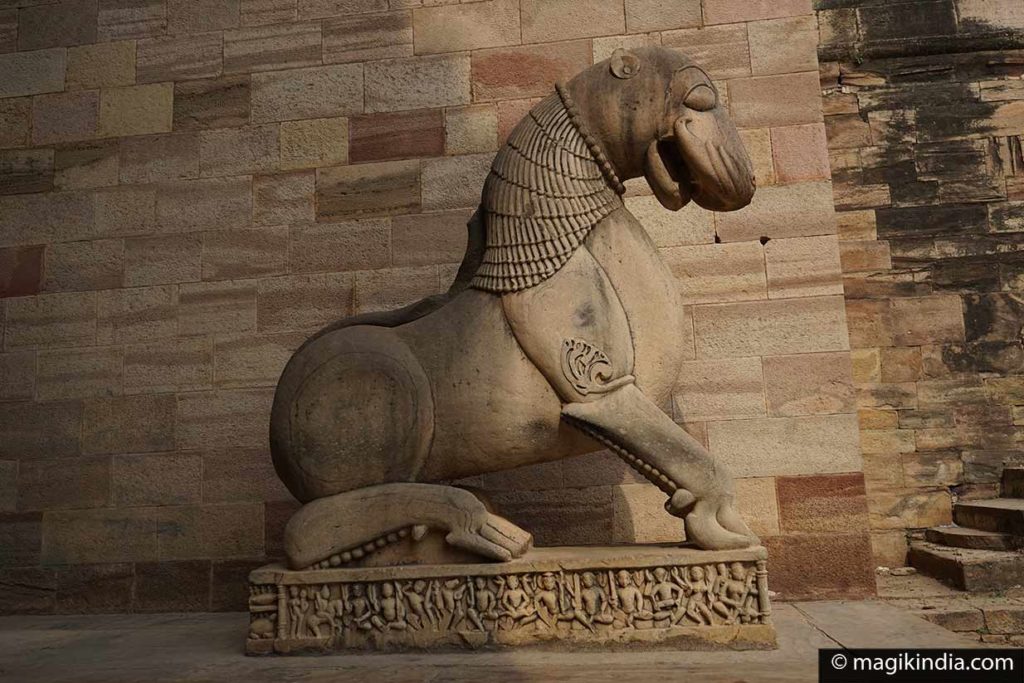
This tumultuous history has left Gwalior with a rich cultural and architectural heritage. The town has produced poets and musicians such as Tansen, some of whose ragas are still considered to be among the greatest works of Indian classical music.
Tansen Sangeet Samaroh

This cultural festival is dedicated to the pillar of Indian classical music, the great Tansen.
The place where this great musician lies buries, Tansen Tomb, in Gwalior is the venue of a music festival held annually in November – December.
Gwalior is the place that has retained the rich classical music tradition and Tansen devotion to music laid to the foundation of what is known as the Gwalior gharana style with its unique dhrupad classical form. Khayal was also refined from the Gwalior gharana only.
And now, let’s visit Gwalior!
Gwalior Fort

Gwalior fort, perched on a 100m hill, covers 3km2 and is surrounded by a strong sandstone wall.
Within the fort there are six palaces, three temples and numerous water tanks. In its glory days Gwalior was considered the most impregnable fortress in all of North India. It was built by Raja Man Singh Tomar in the 15th century and was occupied by one dynasty after another: Tomars, Mughals and Scindias. Even now a Scindia is Maharaja of Gwalior.
Man Singh Palace
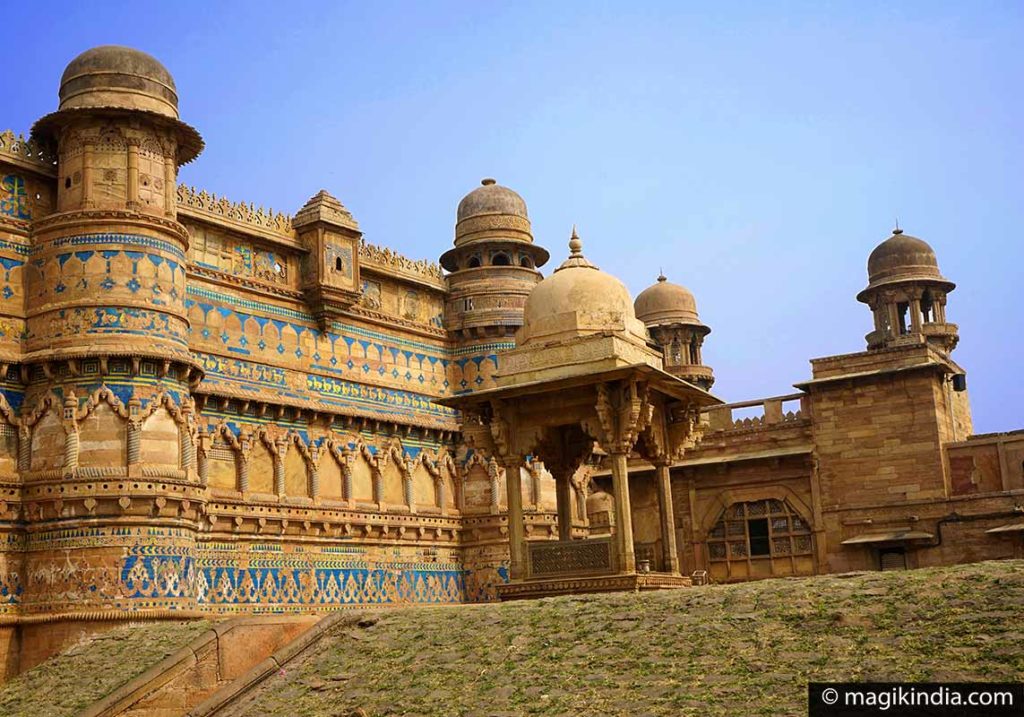
This magnificient palace raising over the cliff is one of the finest Hindu architecture. It was built by Tomar king Man Singh in the 15th century.
There total 4 storeys of the palace of which 2 storeys are underground.
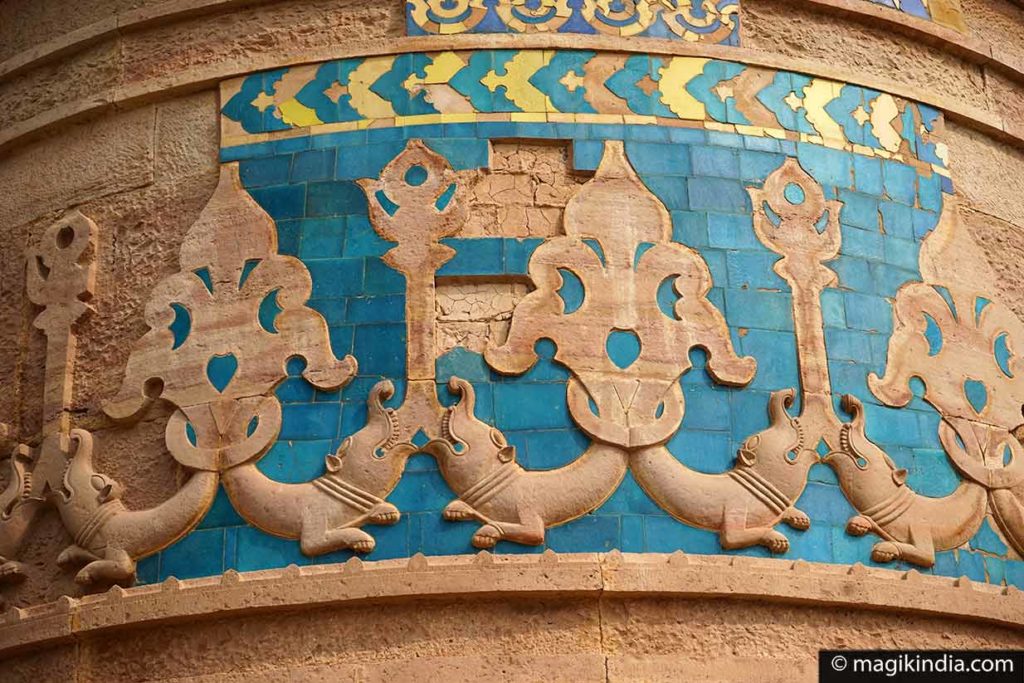
The palace features astonishing façades decorated with beautiful paintings, glaze tiles friezes, to which it owes its nickname of Chitra Mandir, the “painted palace”.
In the sixteenth century the fort was captured by th Mughals, the palace was used as a state prison.
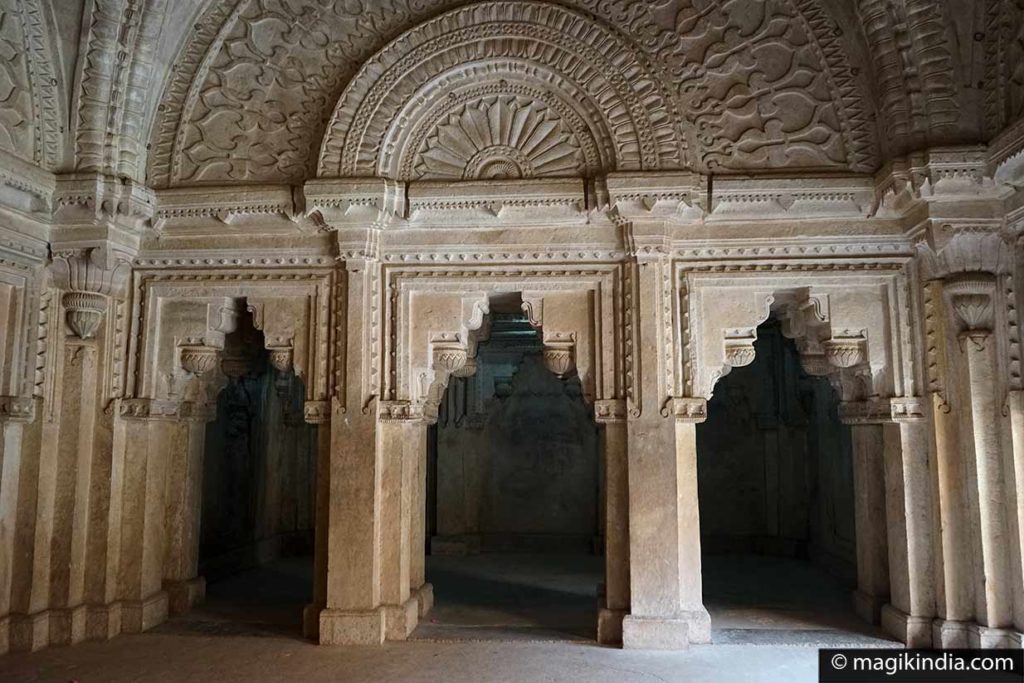
Sas bahu Temples
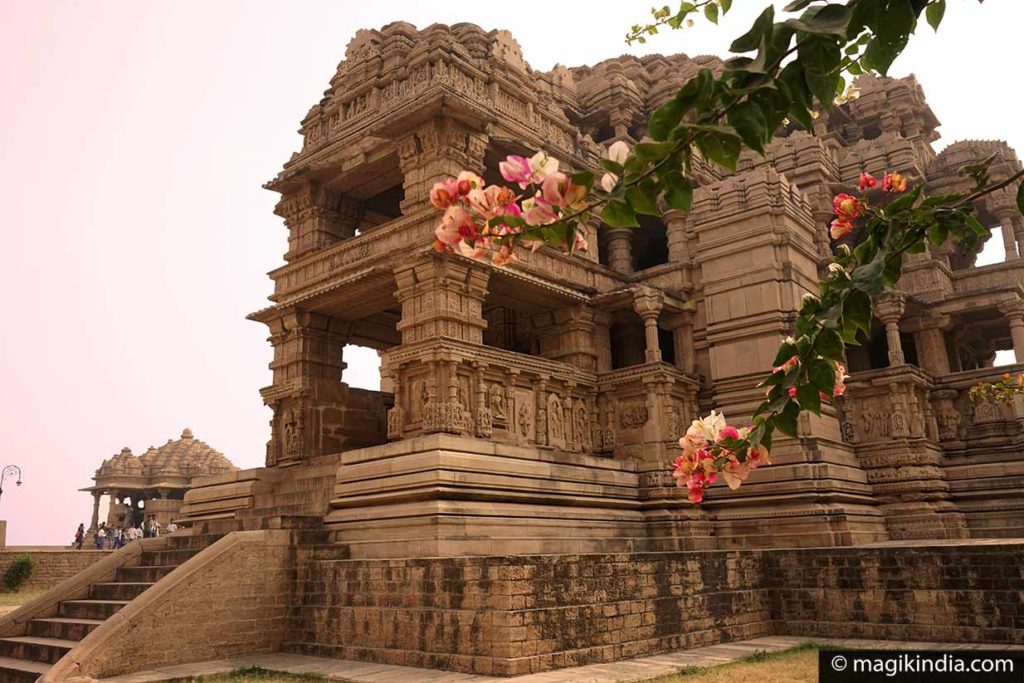
Sas-bahu is a group of two temples popularly called the “mother-in-law’s” and “daughter-in-law’s” temples, though in fact the first is dedicated to Sahasrabahu, the thousand-armed Lord Vishnu, and the other to Shiva. King Kachchhapaghata’s wife worshipped Lord Vishnu but his daughter-in-law worshipped Lord Shiva, so a Shiva temple was added next door to the Vishnu one.
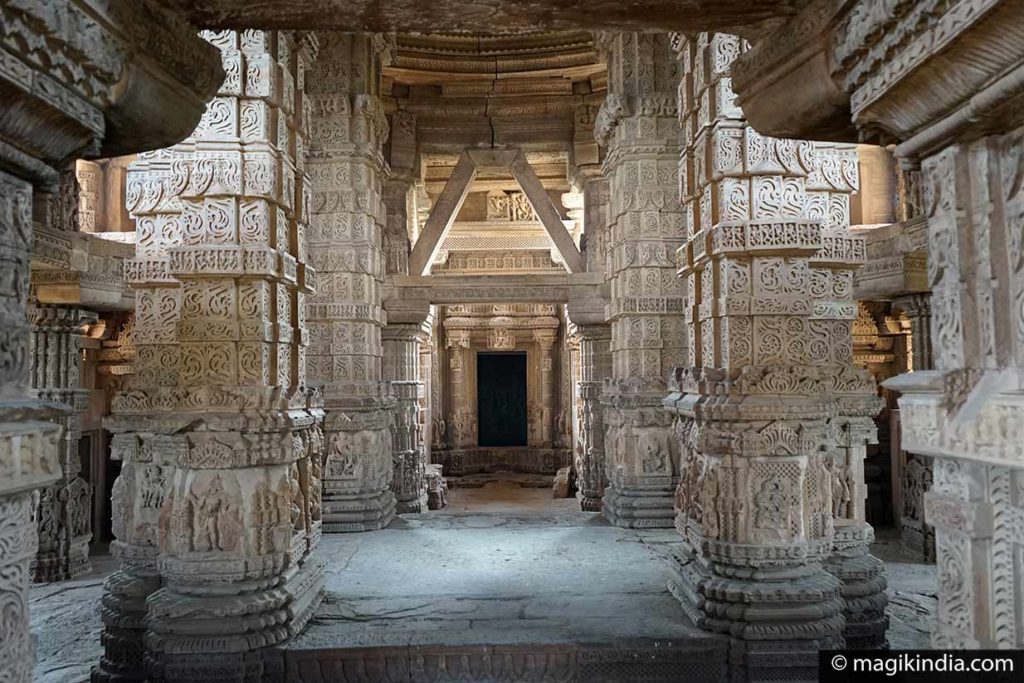
The two temples have a beautiful architecture of Bhumija style, that is to say, the towers are decorated with conical elements, in horizontal and vertical rows.

Teli Ka Mandir

This surprising temple inside the gwalior fort owes its name from “teli” which means oil dealer arr whose expense it. It was built during the reign of king Mihira Bhoja of the Pratihara dynasty in the 9th century, it is the oldest temple in the fort.
Teli Ka Mandir boasts an amazing 30m sikhara (tower) and a blend of South India’s Dravidian architecture with North Indian decorative motifs.
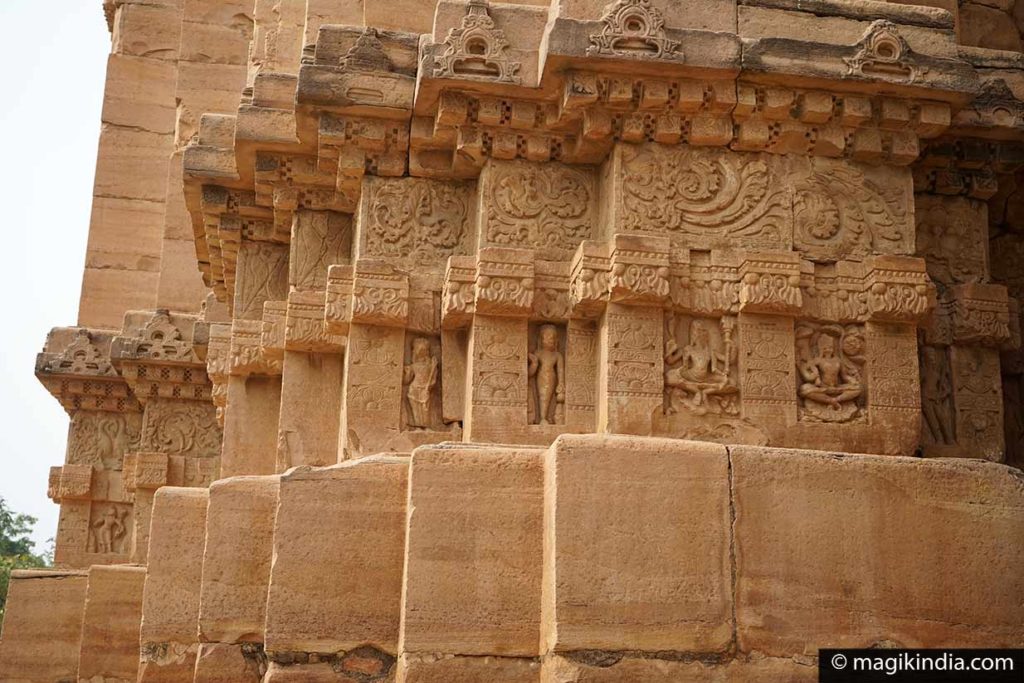
Gurdwara Data Bandi Chorh Sahib
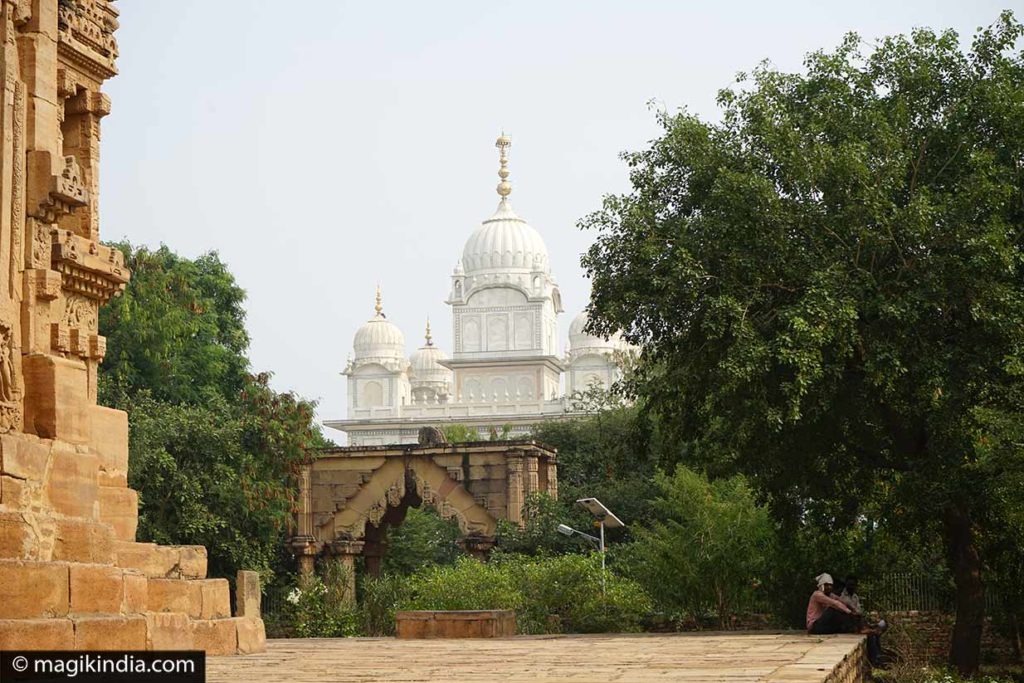
This Sikh temple is associated with the imprisonment of Guru Hargobind Sahib in Gwalior Fort and his release, when he managed to obtain the release of 52 Rajas who had been imprisoned in the fort for years. Bandi means “imprisoned” and chorh means “release”. Pilgrims come to Gurdwara from all over India to pay homage to Guru Hargobind.
Jain rock sculptures
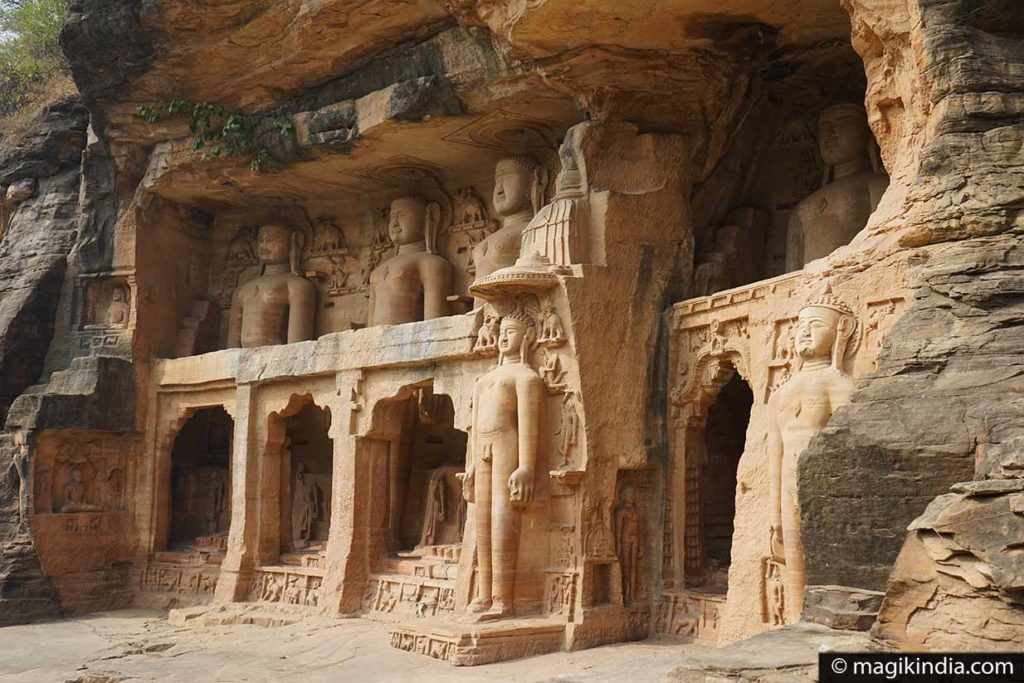
A striking part of the Jain remains at Gwalior is a series of caves or rock-cut sculptures, excavated in the rock on all sides, and numbering nearly a hundred, great and small. Most of them are mere niches to hold statues of the Tirthankaras (the saints of the Jain faith) though some are cells that may have been originally intended for residences.
According to inscriptions, they were all excavated within a short period of about thirty-three years, between 1441 and 1474. One of the colossal figures is 17 m high.
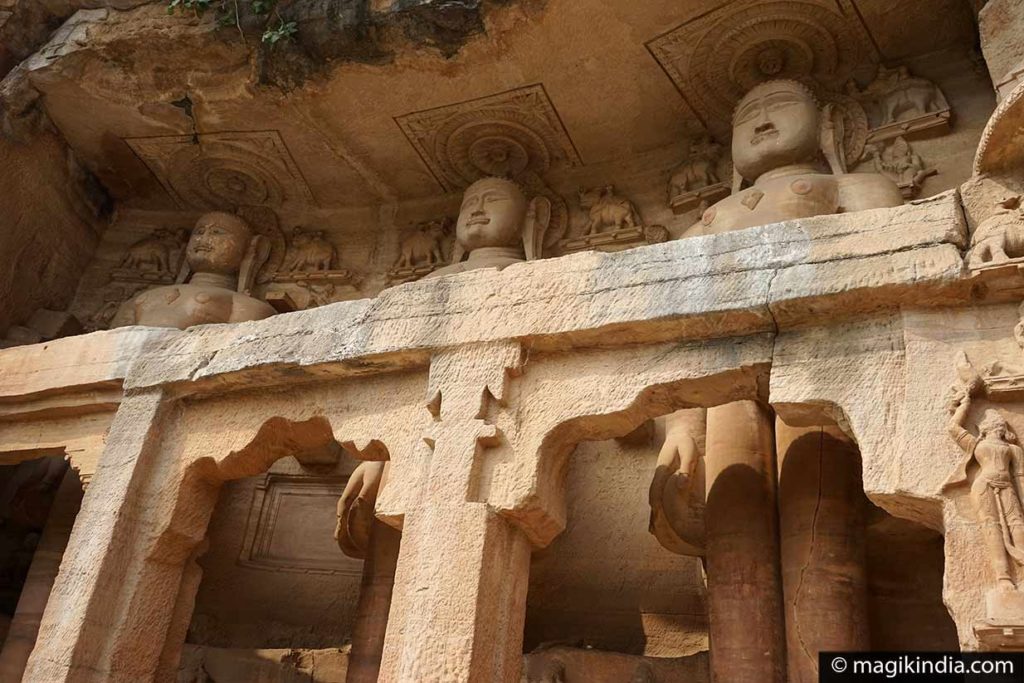
Jai Vilas Palace

Jai Vilas Palace was built at great expense by Maharaja Jayaji Rao Scindia in 1874.
The Maharaja of Gwalior still lives in the palace but 35 rooms have been turned into a museum.
The building, designed by Sir Michael Filose, is a fine example of European architecture. It is especially famous for its great Durbar Hall, decorated with giltwood furniture, a huge carpet and gigantic chandeliers weighing over three tons each.

Mohammad Ghaus & Tansen’s tomb
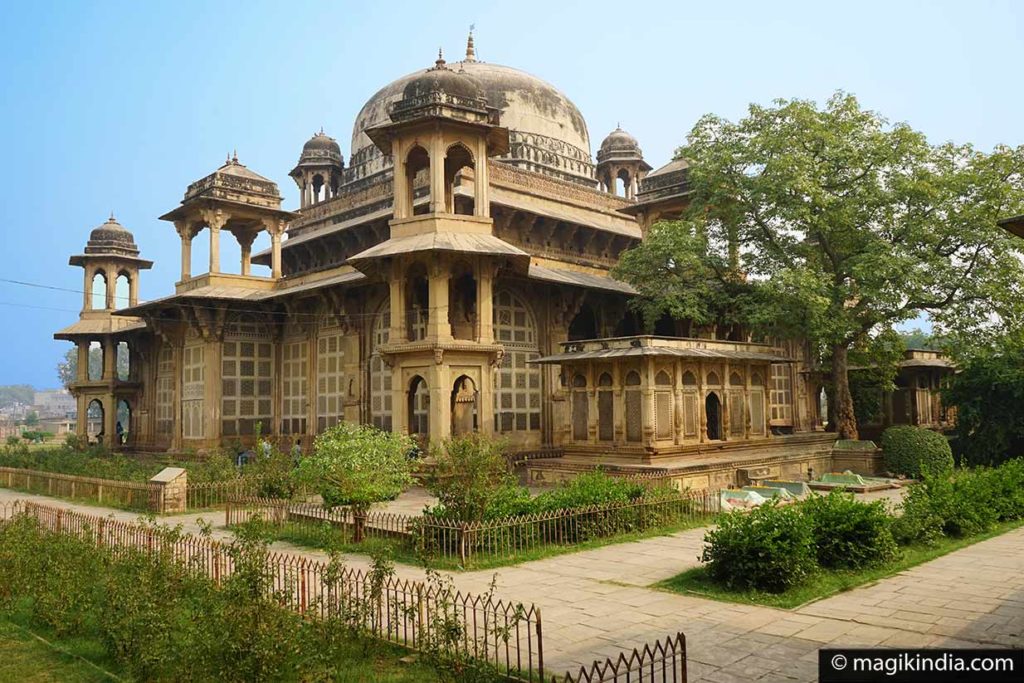
Mohammad Ghaus is one of the most remarkable Sufi figures in India’s history.
Born in the 16th century, he wrote many books, the most famous of which is Gulzare Abraar. It is said that he helped the Mughal sultan Babur to seize Gwalior Fort.
Just beside the tomb of Mohammad Ghaus is Tansen’s tomb. Tansen (1506- 1589) was the most famous singer at the court of Akbar the Great and is considered one of the nine jewels of the emperor’s court.
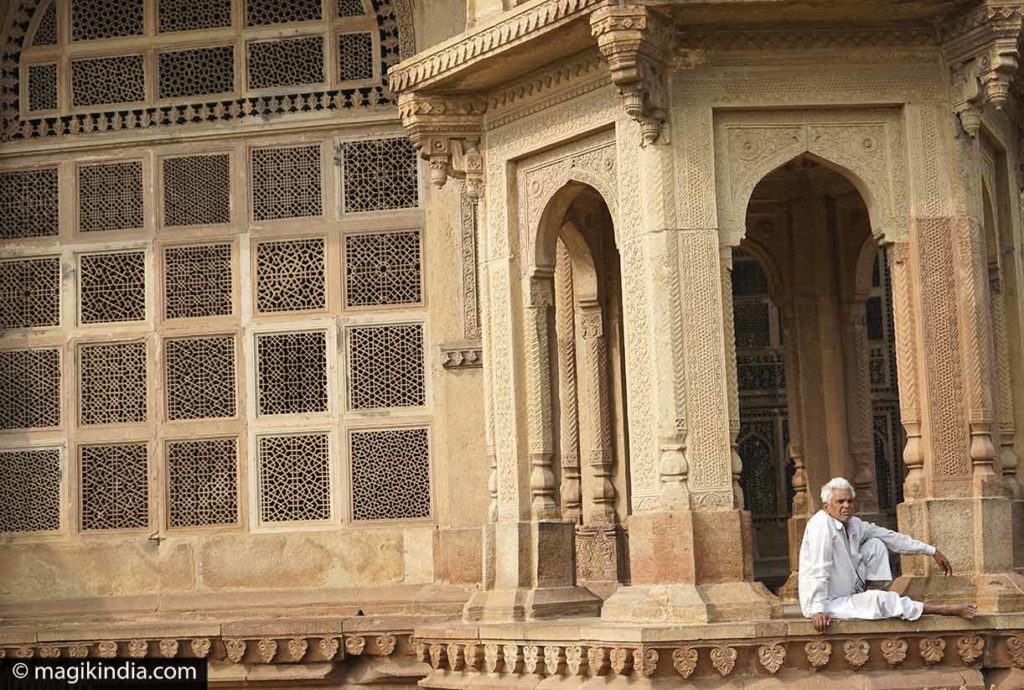
Tansen is said to have been responsible for many reforms and inventions in classical Indian music. Every year a music festival called Tansen Sangeet Samaroh is held here – a way to discover the rich heritage of Gwalior’s classical repertoire.
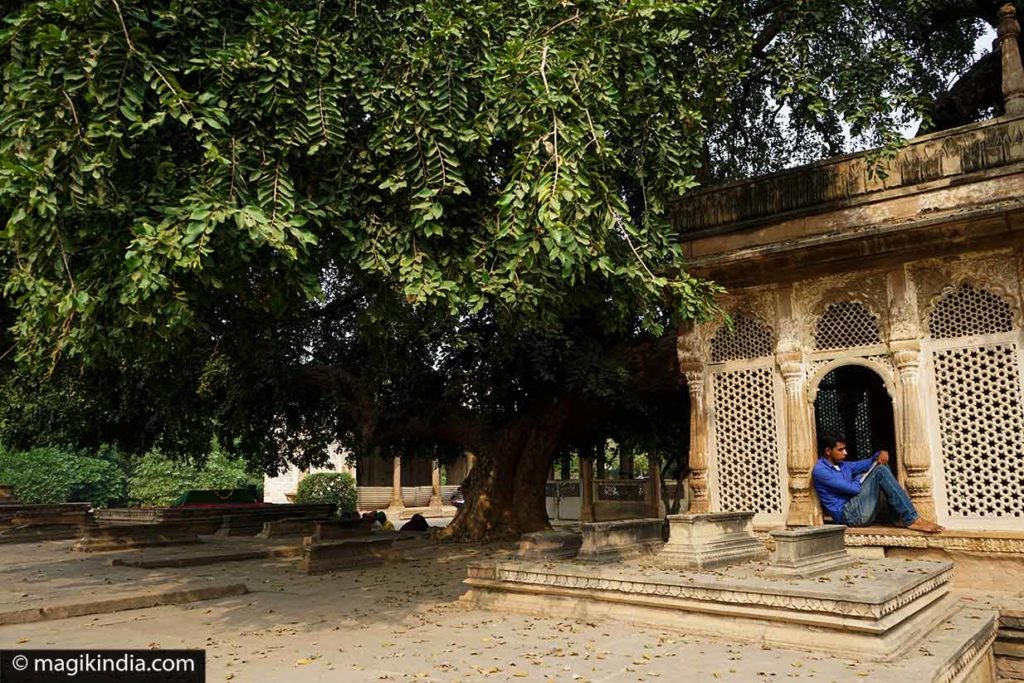
Vivaswan, Sun Temple
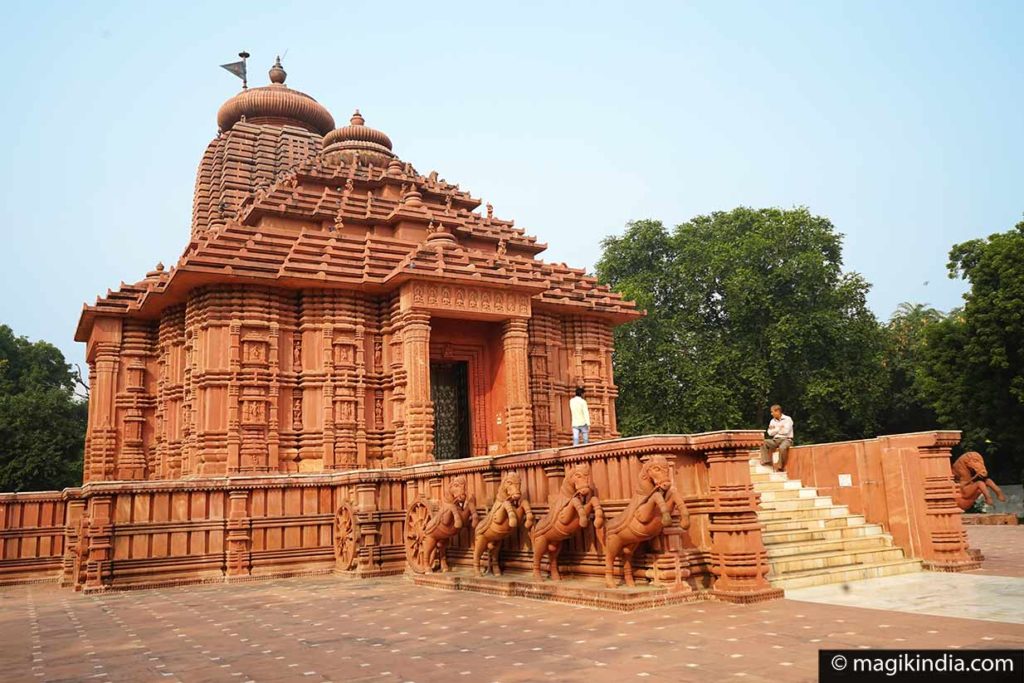
The Sun Temple, a recent building, is a replica of the famous Sun Temple at Konark in Orissa.
It is surrounded by a well-tended garden which makes the walk a very pleasant one
